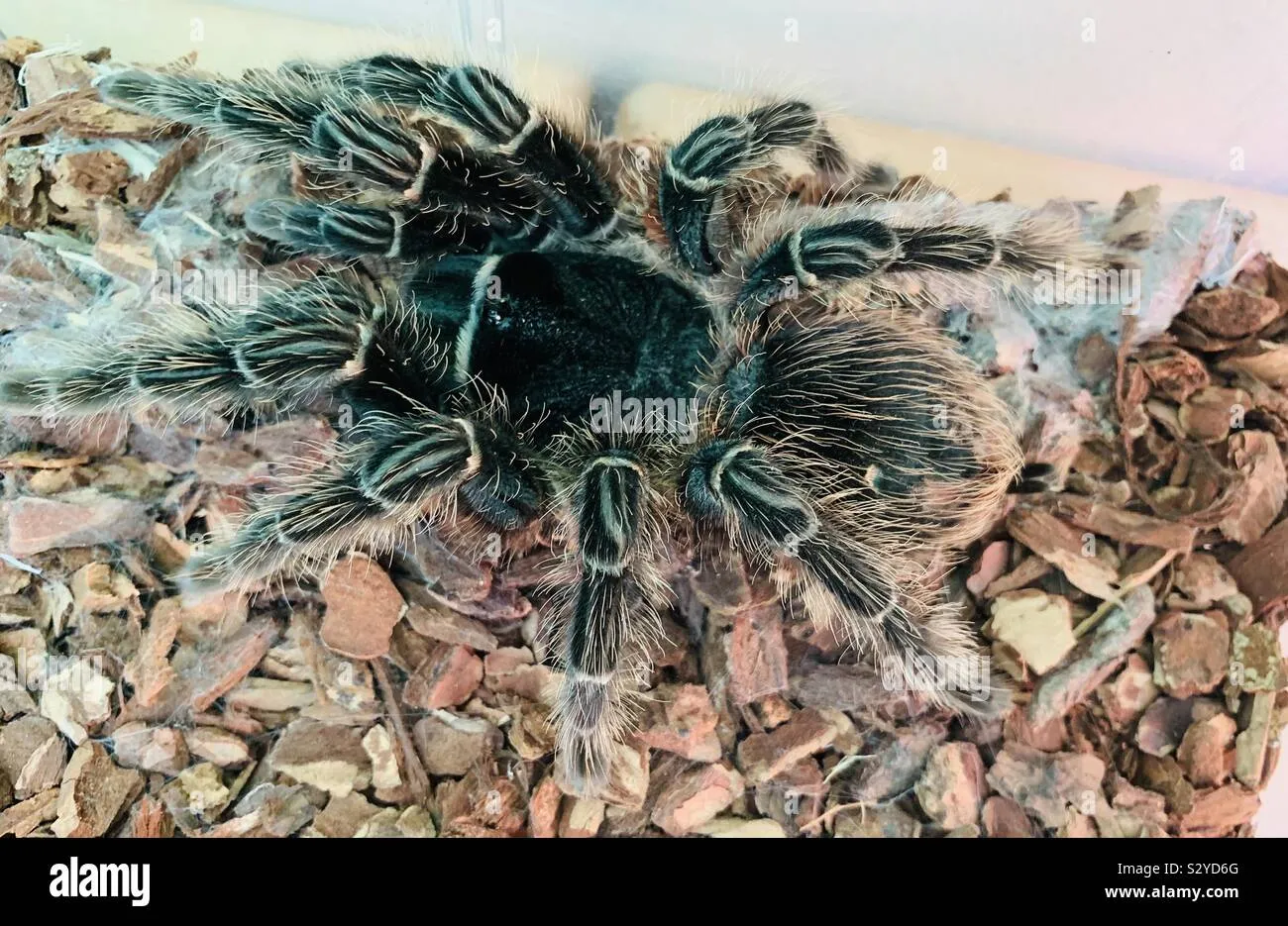Understanding Female Bird-Eating Tarantulas
The world of arachnids is fascinating, and among the most captivating creatures are the bird-eating tarantulas. While their name might suggest a diet solely consisting of birds, these large spiders are opportunistic predators, feeding on insects, small reptiles, and occasionally, yes, even birds. Identifying a female bird-eating tarantula requires understanding their unique characteristics and behaviors. This guide will help you navigate the world of these impressive creatures and understand how to spot a female in its natural habitat. Discovering these spiders in the wild requires patience, knowledge, and a deep respect for wildlife. This article provides insights into identifying them and understanding the ethical considerations involved in observing these magnificent animals in their environment, providing a comprehensive guide to recognizing and appreciating female bird-eating tarantulas.
Identifying Characteristics of Females
Differentiating between male and female bird-eating tarantulas is crucial for anyone interested in observing them in the wild. Several key characteristics help distinguish the females. Females tend to be larger and more robust than their male counterparts. This difference in size is often noticeable, with females having a broader body and a more significant overall size. Understanding these physical differences is critical for correct identification, as size is a primary indicator. Beyond physical attributes, behavioral traits offer another layer of insight, helping enthusiasts distinguish females. Females are generally less inclined to wander and are more likely to stay near their burrows, making them more challenging to find but also easier to observe in the right locations and times of year. They also have a longer lifespan, which plays a role in their overall size and growth.
Size and Appearance

The physical appearance of female bird-eating tarantulas is a key indicator for identification. Females are typically larger than males, with body sizes that can range from 8 to 12 inches in leg span, depending on the species. They possess a more robust build, which contributes to their overall larger size. Their chelicerae, or mouthparts, are also generally more substantial than males. The carapace, the top shell of the cephalothorax, tends to be broader and more rounded in females. Colors vary, but they often include shades of brown, black, and sometimes even reddish hues, providing excellent camouflage within their environment. The size difference is a significant visual cue and a good starting point for identification. The overall larger size and more substantial build are usually immediate indicators of a female bird-eating tarantula.
Behavioral Traits
Behavioral traits are critical in distinguishing female bird-eating tarantulas. Females are generally less mobile than males, especially when mature. Males often wander in search of mates, while females tend to remain in or near their burrows, making them less visible but more territorial. They are also known to be more defensive, especially when protecting their eggs or guarding their territory. This defensive behavior can manifest as striking or raising their front legs in a threat posture. Their feeding habits are more consistent, eating when food is available, and their behavior is generally less erratic than that of males. Understanding these behavioral traits is essential when observing tarantulas in their natural habitat because these patterns help identify the female’s presence and can reveal other aspects of their life cycle.
Habitat and Location
Understanding the habitat and geographic distribution of bird-eating tarantulas is essential for anyone seeking to observe these arachnids. These spiders prefer warm, humid environments, where they can thrive and build their burrows. They are typically found in tropical and subtropical regions, including parts of South America, Central America, and even some regions of North America. Knowing their preferred environments and the specific locations where they are commonly found will significantly increase your chances of spotting a female bird-eating tarantula. This section details the environmental preferences of bird-eating tarantulas and provides insights into the geographic distribution of their populations, assisting enthusiasts in planning observation trips and increasing their chances of a successful encounter.
Preferred Environments

Bird-eating tarantulas thrive in specific environmental conditions. These spiders are particularly fond of tropical and subtropical climates, where they find the warmth and humidity they need to flourish. They often inhabit rainforests, grasslands, and other areas with dense vegetation and a consistent supply of insects and other small animals, which serve as food. The presence of suitable soil is essential, as they dig burrows, providing shelter from predators and extreme weather conditions. The availability of moisture is also key; these spiders often prefer areas near streams or rivers, where humidity levels remain high. Understanding these preferences is vital to successfully locating and observing female bird-eating tarantulas in their natural habitat, increasing the chances of finding them in their ideal environments.
Geographic Distribution
Bird-eating tarantulas are found across a diverse range of geographic locations, primarily in the tropical regions of the Americas. The most common species are located in South America, particularly in countries such as Brazil, Venezuela, and Guyana. Central America is also home to numerous species, including those found in Costa Rica and Panama. In North America, some tarantula species can be found in the southern parts of the United States, although the bird-eating tarantula is less common there. Knowledge of the geographic distribution helps in planning observation trips and focusing on the specific habitats where these spiders are most likely to be found, offering better opportunities for enthusiasts hoping to encounter female bird-eating tarantulas. Local guides and resources can provide valuable insights into specific species and their regional distribution, making observations more targeted and successful.
Finding Female Tarantulas
Locating female bird-eating tarantulas in the wild requires careful planning, the right tools, and a keen understanding of their behavior. This section focuses on practical strategies, including the best times for observation, the tools and techniques to use, and what specific details to look for when searching for these spiders. Knowing the habits and habitats of these arachnids and implementing these strategies increases your chances of a successful encounter. With the right preparation, it is possible to observe female bird-eating tarantulas safely and respectfully in their natural environment, making the experience both educational and rewarding.
Best Times for Observation

The best times for observing female bird-eating tarantulas depend on their activity patterns and environmental conditions. They are most active during the warmer months, which coincide with their mating season. Dusk and nighttime are generally the best times to search for them because they are nocturnal creatures. During these times, they are most likely to be out of their burrows or near the entrance, waiting for prey. Monitoring weather conditions is also crucial, as rain can drive them from their burrows, and high humidity often encourages activity. Careful planning and observation of the spiders’ behavior and environment can significantly increase the chances of successful sightings. Adjusting observation times based on these factors will optimize the opportunity to encounter female bird-eating tarantulas in their natural habitat.
Tools and Techniques
Using the right tools and techniques is essential for safely and effectively observing female bird-eating tarantulas. Essential gear includes a flashlight or headlamp for navigating in low-light conditions. Binoculars can also be helpful, allowing you to observe the spiders from a distance without disturbing them. When approaching their habitat, moving slowly and quietly is essential to avoid scaring them. A field guide or identification app can help differentiate between species and sexes. Digital cameras with macro lenses are useful for capturing detailed images without getting too close, offering valuable insights into their behavior and appearance. Maintaining a safe distance and being cautious is very important. These tools and techniques will help you conduct a respectful and rewarding observation experience.
What to Look For
When searching for female bird-eating tarantulas, look for key signs. Start by identifying potential habitats, such as burrows in the soil or under logs and rocks. Pay attention to size; females are usually larger and more robust than males. Observe any behavioral signs, like the spider being near its burrow entrance or displaying territorial behavior. Look at their size and overall appearance for a broader body and more rounded carapace. Patience is key because females may be less active and more hidden than males. By paying attention to these signs and being patient, you will significantly increase your chances of finding a female bird-eating tarantula and observing this fascinating species in its natural habitat. Careful observation and recognition of these cues will lead to the discovery of female bird-eating tarantulas.
Ethical Considerations

Observing wildlife requires respect for the animals and their environment. The ethical guidelines discussed in this section ensure that your interactions with female bird-eating tarantulas are responsible and do not cause harm to the spiders or their habitats. Knowing and following these ethical considerations is fundamental for responsible wildlife observation.
Respecting Wildlife
Respecting the wildlife is the first step in ethical observation. This includes maintaining a safe distance, which helps minimize disturbance and prevents stress on the tarantulas. Avoid touching or handling the spiders, as this can be dangerous. Refrain from modifying their habitat in any way. Do not leave any waste. Reduce noise levels and any unnecessary light. Practicing these habits ensures you are not causing any environmental or physical stress on the tarantulas. Practicing these simple rules shows respect for the wildlife. Always prioritize the tarantula’s well-being and safety above all else, making the observation experience respectful and sustainable.
Conservation and Awareness
Promoting conservation awareness is vital for protecting the future of bird-eating tarantulas and their habitats. Supporting conservation efforts through donations, volunteering, and educating others can help preserve these amazing creatures. By increasing the public’s awareness of these species, we can encourage responsible practices, reduce habitat destruction, and decrease the threats to bird-eating tarantulas. Protecting their environment is just as important as protecting the spiders themselves. Participating in conservation initiatives helps create a community that is dedicated to preserving the beauty and biodiversity of these creatures.
